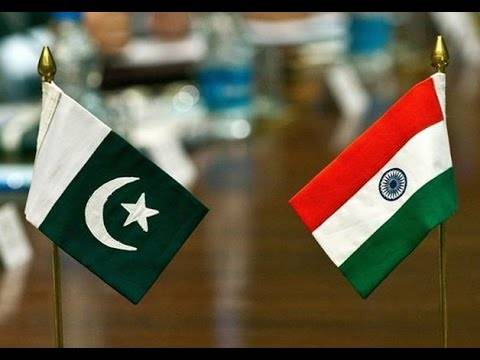ISLAMABAD - India remained obdurate as the second round of high-level talks with Pakistan, under the supervision of the World Bank, on controversial Kishanganga and Ratle hydroelectric power projects ended without any result in Washington.
In the latest round of discussions, India not only refused to accept any of the amendments proposed by Pakistan but also refused to agree to any of the dispute settlement options proposed by the World Bank.
While acknowledging the Bank’s continued efforts, Pakistan has now requested the World Bank to fulfil its duties under the Indus Waters Treaty by empanelling the Court of Arbitration.
The delegations of Pakistan and India met at the World Bank Headquarters in Washington on September 14-15 to discuss the way forward in disputes pursuant to the Indus Waters Treaty, 1960, concerning India’s plans to build Kishenganga and Ratle power plants. The secretary-level talks failed to resolve the impasse on the choice of forum for settlement of the disputes.
According to a handout issued by the World Bank on Saturday, an agreement could not be reached at the conclusion of the meetings between the Pakistani and Indian delegations.
Both countries and the World Bank appreciated the discussions and reconfirmed their commitment to the preservation of the treaty. The World Bank will continue to work with both countries to resolve the issues in an amicable manner and in line with the treaty provisions. The World Bank remains committed to acting in good faith and with complete impartiality and transparency in fulfilling its responsibilities under the treaty while continuing to assist the countries, the handout said.
The Pakistani delegation was led by Secretary Water Resources Division Arif Ahmed Khan along with Secretary of Water and Power Yousuf Naseem Khokhar. The Indian delegation was led by Union Water Resources Secretary Amarjit Singh.
In 2016, Pakistan asked the World Bank to restart the process of arbitration in its water dispute with India. Pakistan had argued that only arbitration can save the Indus Waters Treaty (IWT), 1960, which has successfully resolved water disputes between Pakistan and India for more than half a century.
Subsequently, on October 4, 2016, India made a request for appointment of Neutral Expert to adjudicate the same disputes.
The World Bank initially agreed to setting up both fora but later ‘paused’ both processes for establishment of the Court of Arbitration and appointment of the Neutral Expert for the reason that two forums carry the potential for conflicting rulings.
In an effort to resolve the impasse, the World Bank then invited the secretaries for ministries of Water Resources of both countries to consultations for resolution of the impasse. In the first round of consultations held in Washington DC on July 31-August 1, 2017, Pakistan proposed amendments to Indian designs that would make the project Treaty compliant. India agreed to studying those designs and the parties decided to meet again in September 2017.
The current dispute concerns two hydroelectric plants — Kishanganga (330MWs) and Ratle (850 MWs) — that India is building in Occupied Jammu and Kashmir on the rivers whose waters were given to Pakistan under the IWT. Pakistan has serious reservation over the designs of both projects and believes that these projects would concede India to impede the water flow to the country.
The proposed Kishenganga hydroelectric project is located in Occupied Jammu and Kashmir on River Neelum. The design envisages the construction of 180.5 metre long and 35.48-metre high concrete dam. The full pondage capacity is 18.35 MCM (0.0061MAF). The detailed information about the run-of-river project was received from India on June 25, 2006. Pakistan raised objections under the provisions of IWT 1960 and sent them to India in August 2006. Mainly, Pakistan has objections on pondage, sediment outlet, type of spillway and placement of power intakes.
Similarly, Ratle hydropower project is located on the main Chenab River about 55kms upstream of 900MW Baglihar hydropower project. It has the installed capacity of 850MW. It has a concrete gravity dam with the height of 111m, gross capacity of the reservoir is 78.71 mm3 (million cubic metres) or 64000-acre-feet. The capacity of the operating pool (pondage) is 23.86 mm3 or 19300-acre-feet. It has an orifice spillway with five gates of 10.75 m (width) and 14.2 m (height); the spillway crest has an elevation of 985.0 m amsl with storage above spillway crest of 61.2 mm3 or 50000-acre-feet.
The design of the project was received from India on August 29, 2012, and Pakistan has communicated its objection on November 26, 2012. Pakistan has objected to the design of the Ratle project as it believes the Indian design of the project would reduce Chenab flows by 40 percent at Head Marala.
Indian obduracy wrecks latest water talks
IMRAN ALI KUNDI






